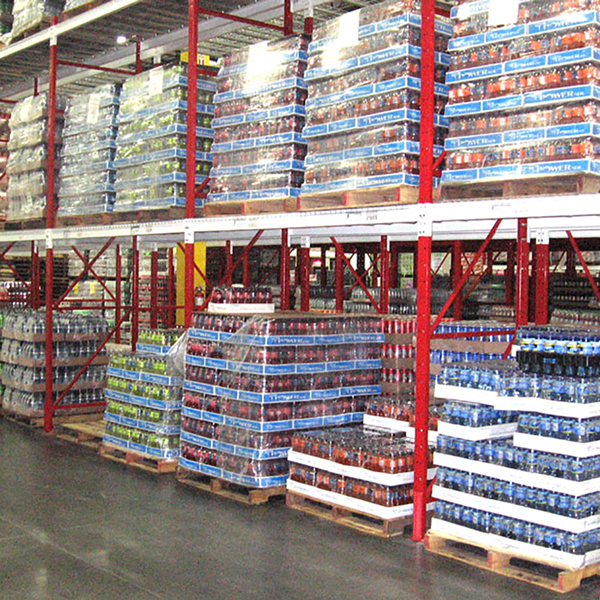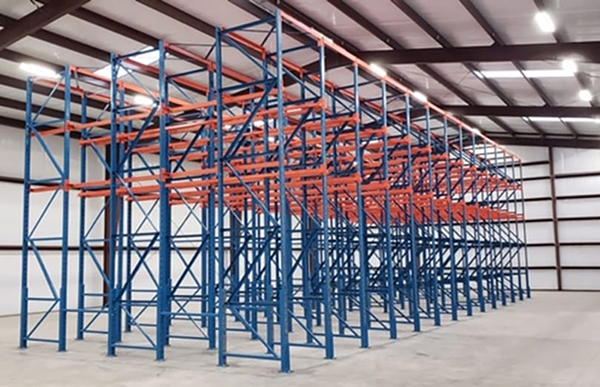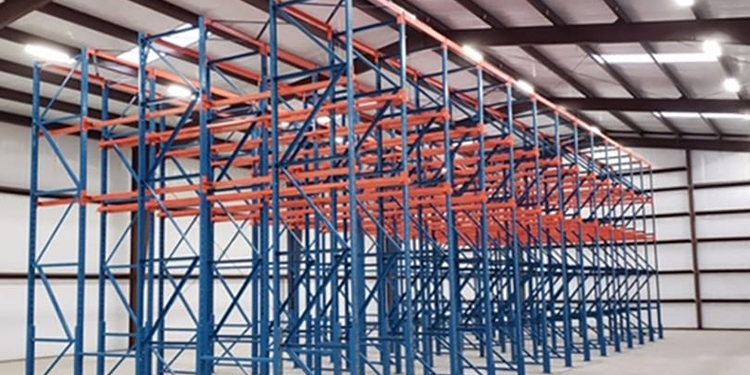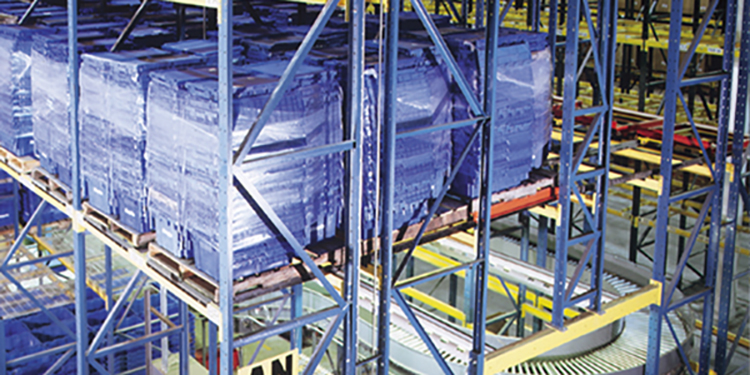For operations housing high volumes of high-turnover stock keeping units (SKUs) or time-sensitive goods, choosing the optimal first-in/first-out (FIFO) rack system is critical. In these systems, the pallet loads stored first are also the ones that exit the system first. This makes FIFO rack ideal for facilities storing products that have time sensitive handling requirements, such as perishables with best by or expiration dates. It also supports rapid stock rotation and high inventory turnover.
Utilized in warehousing, manufacturing, and cold storage environments, there are three common FIFO rack types, said Terry Caston, Senior Director of Operations at Twinlode, a division of KPI Solutions. The company is a member of the Rack Manufacturers Institute (RMI).
“By ensuring that older items are picked first, FIFO rack minimizes the risk of spoilage and waste,” he explained. “Essentially, using FIFO rack provides built-in inventory management for high-turnover items.”
The following explores the three most common FIFO rack styles: single select, pallet flow, and drive-thru.
Single Select Rack: Simple, Accessible, and Flexible
 “Single select—also called selective rack—is the most basic rack design,” Caston said. “It features upright frames, horizontal beams, and one-pallet-deep storage configurations. Every pallet is accessible from the aisle.”
“Single select—also called selective rack—is the most basic rack design,” Caston said. “It features upright frames, horizontal beams, and one-pallet-deep storage configurations. Every pallet is accessible from the aisle.”
That degree of accessibility makes it ideal for operations where SKUs turn quickly. It is also popular for applications where each pallet has a different expiration date, like in food distribution or pharmaceuticals. “If you need to grab anything at any time, this is your rack,” he noted.
But that convenience comes with a cost: space. “Using single select rack sacrifices storage density because it requires an aisle for access of every row,” he explains. “Even when configured back-to-back, it’s very low density compared to other FIFO rack systems. That means it’s not always the best use of square footage, particularly in high-rent or cold storage environments.”
Despite the space trade-off, single select remains popular. “Operations like it because it’s easy to adjust. For facilities with constantly changing SKUs or pallet sizes, this is the most versatile option,” added Caston.
Pallet Flow: High Density FIFO Rack
 If single-select is basic and flexible, pallet flow is its high-efficiency cousin—designed for scale and throughput.
If single-select is basic and flexible, pallet flow is its high-efficiency cousin—designed for scale and throughput.
“Pallet flow systems can go 20 to 25 pallets deep,” Caston explained. “Loading occurs on one side at the charge end, and the pallets flow forward automatically on rollers to the discharge end. When a pallet is picked, the rest move forward without needing forklifts to enter the lane.”
Ideal for Conditioning Products, Cold Storage, Dock Staging
This design makes pallet flow ideal for consistent, high-velocity SKUs. “I’ve seen it used for storing plastic bottle preforms that need to acclimate to room temperature before being blown into bottles. They sit in the rack and naturally reach the correct humidity and temperature,” he said.
“It’s also ideal for conditioning bulk ingredients, like syrups in heated rooms,” continued Caston. “The manufacturer needs the syrup to reach the right viscosity, so received pallets sit in pallet flow rack for a specific dwell time. Then the system ensures that the first syrup in enters production first.”
He also mentioned cold environments. “You see pallet flow a lot in manufacturing applications with freezer storage. It lets you push a lot of pallets into a small footprint without sending a driver deep into the rack, which saves time and reduces exposure to cold.”
Yet another common application for pallet flow is staging for outbound shipments, Caston noted. “It allows pre-staging of pallets from the production side. That enables forklift operators on the docks to conveniently access loads designated for a specific trailer from the discharge end.”
Pallet Flow Limitations
There are some caveats to pallet flow usage, however. “Every pallet in a lane must be batch equivalent—same product, same date code, same packaging. Otherwise, you’ll have quality issues,” he cautioned. “It’s also expensive. The rollers add up, so it’s an investment.”
Design-wise, there are limits on overall system height, too, Caston added. “To ensure the pallets advance requires the rollers to be on a pitched incline—typically a half inch per foot. In a 100-foot-long lane means the charge end is over four feet higher than the discharge end. Because the forklift has to be able to reach the top level, most systems top out at four pallets high due to load weights and reach limits.”
Drive-Thru Rack: Density on a Budget
 Drive-thru racking takes a different approach. Its design creates dense storage with minimal components, making it one of the most budget-friendly FIFO rack systems—if used correctly.
Drive-thru racking takes a different approach. Its design creates dense storage with minimal components, making it one of the most budget-friendly FIFO rack systems—if used correctly.
“Instead of rollers, pallets sit on rails that run the depth of each storage bay. Forklifts load pallets from one side and pull from the other, hence, drive-thru,” said Caston.
Loads Don’t Advance Automatically
Unlike pallet flow, there’s no automatic load advancement. “The pallets just sit there. To access the next one, a forklift has to drive deeper into the rack.”
This has implications for inventory management. “The whole bay—ground to top—must be the same product,” he stressed. “There’s only one scan location for the entire bay. The warehouse management system (WMS) doesn’t know if a specific pallet location is five positions deep or ten. So mixing SKUs creates chaos.”
Because of this, drive-thru systems are best for high-volume, single-SKU applications like beverage bottling or dock staging. “It’s great if you’re pushing out 40 pallets of the same water bottle every shift or staging loads for an outbound trailer,” added Caston. “Typically one forklift is loading one bay from one side while a second forklift is removing loads in a different bay from the other side. That makes it very efficient.”
Honeycombing Potential is High
One downside is the potential for honeycombing—a term that describes underutilized pallet positions. “As you pull pallets out, those spots stay empty unless you reload the entire bay,” he explained. “That’s wasted space you’re still paying to condition and maintain.”
Drive-thru systems are also structurally simpler than their cousin, drive-in systems. “Drive-in has rear support beams that give it more structure. Drive-thru is held together mainly at the top, so it’s a little more flexible—but a little less stable,” said Caston. That means forklift operators must receive training on how to safely enter and exit the system to minimize impact risks.
Get Help Choosing the Right FIFO Rack
Looking for more insights into specifying the optimal FIFO rack for your application? RMI offers the publication, “Considerations for the Planning and Use of Industrial Steel Storage Racks.” Additionally, RMI members offer rack design consultations and recommendations. For more information, visit mhi.org/rmi.




